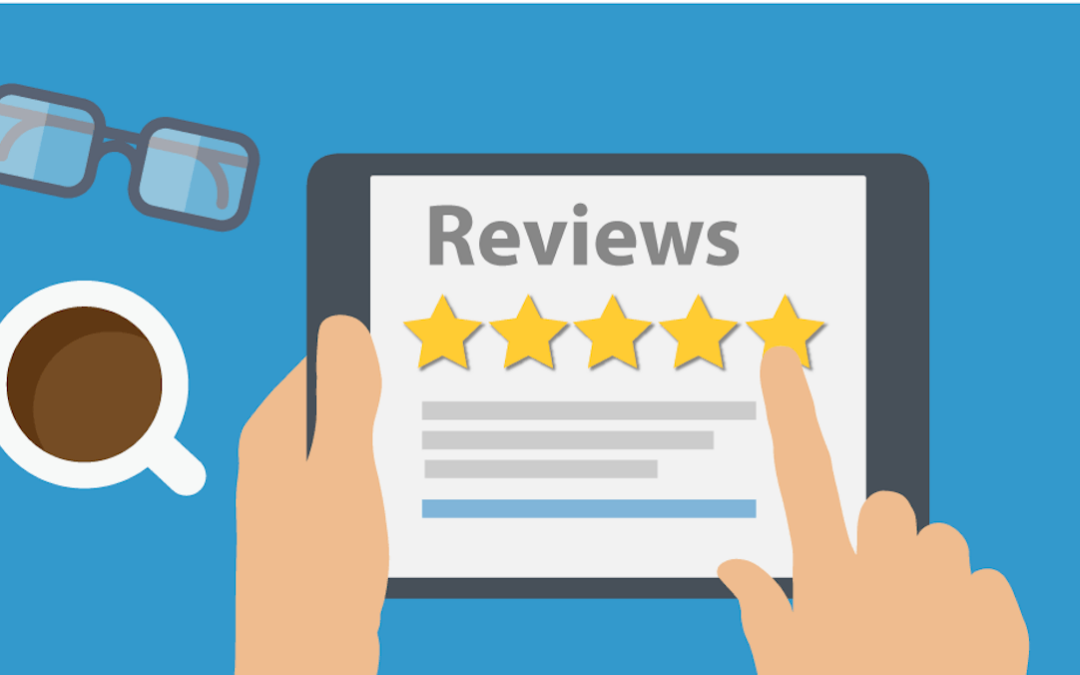Word of mouth is an extremely effective form of marketing and online reviews super-charge their already powerful effect.
Research shows that reviews have a very important role to play in customers’ purchasing decisions. According to Brightlocal 91% of people aged 18-34 trust online reviews as much as personal recommendations, and 93% of consumers admit that online reviews helped influence their decisions.
Here’s your guide to scoring five-star reviews every day.
1. How to get reviews
The best way to get reviews is to simply ask. Most customers who enjoyed a positive experience won’t proactively submit a review — you’ll have to request one. Just be polite about it.
If customers are vocally happy with your work, you can ask them to leave a review right there on the job. You’ll find that people might be more willing to get a one-minute task out of the way when you’re with them, rather than complete a review days (or even weeks) later. Just make sure to follow up if a customer says they will, but nothing shows up.
Here are some other things to be mindful of when asking for reviews:
Do:
-
-
- Add links to your review profiles on your website, so people can find them easily.
- Make requesting customer reviews part of your normal business processes when closing off a job.
- Mention your review platforms on business cards and flyers.
- Follow up on jobs with emails requesting reviews (add links here too).
- Offer customers a choice, by signing up to different review platforms.
Don’t:
-
-
- Hassle customers too hard for reviews. If they don’t want to offer feedback, leave it at that. Don’t ask more than twice.
- Write fake reviews or pay third parties to leave positive reviews. Fake reviews are often easy to spot and you don’t need it coming back to bite you.
- Source too many reviews all at once. This could trigger some review site spam filters and lead to reviews being deleted.
2. How to handle bad reviews
Misunderstandings happen, but there’s no way around it — now and then bad reviews will come your way. Rather than get all hot under the collar, take it as an opportunity to improve your service. If the feedback is constructive, make some changes, respond to the review, thank them, and let them know what you’ve done to resolve the situation.
If the review feels wholly unfair, still respond (in a controlled manner) and contact the customer offline to hear more about why they’re upset. Handled well, bad reviews can show that you’re transparent and responsive to customers. Fronting up and trying to make things right can build more trust than never making a mistake in the first place.
Monitor your reviews
Customers have come to expect responses to their online reviews. This is where services like Google Alerts can help. Sign up and you’ll be notified every time your trades business is mentioned online. This will help you stay on top of the chatter and proactively manage your online reputation.
3. Online reviews and SEO
Online reviews have been shown to heavily impact purchasing decisions, but you need lots of them to make an impact. A handful of four or five-star reviews might not cut it. Focus on getting ratings and reviews from every job you do. Eventually, your customer review count will hit the hundreds mark, showing customers that you’re popular, reliable and consistent.
Reviews are an effective way to improve your SEO by associating your trade business with popular search keywords and phrases. For example, reviews that include who you are and what you do, e.g. ‘Plumber in Sydney’ and ‘Fixed my blocked toilet in London’, will increase your online credibility and raise your local ranking. That means more eyeballs, more clicks on your website — and more jobs.
4. Review platforms
As tradespeople offer local services, it pays to focus on localised sites. Here are our top picks for highly effective review sites for trade businesses, backed with local relevance.
Google My Business (GMB)
Creating a Google My Business listing is the best way to reach potential customers in your immediate vicinity. It helps Google users in your local area find and contact you through Google Search or Google Maps. The listing gives your customers additional insights too, like what your busiest time of day is, as well as review ratings.
-
-
- Add as much information as you can, especially:
- Business name & logo
- Physical address
- Phone number
- Business type
- Hours of operation
- Website link
- Photos
Facebook
Facebook is an ‘all-in-one’ resource for finding customers. When set up correctly, it can be used as an alternative to a website where people can message you directly and book appointments. The extra cool thing about Facebook is that when users leave a positive review, their friends will probably see it — exposing your trade business to a new network of potential customers.
Learn how to use Facebook for your trade business.
Online small business directories
Online small business directories can work wonders for your trade business. Customers who use them are actively looking for someone to hire. They generally categorize by trade and location, so to win business in your local area, you need to demonstrate why you’re the best. Use your reviews to do this.
Yelp
Yelp is another popular internet search and review service. ‘Yelpers’ rate their experiences on a five-star scale and are offered the option of leaving text-based feedback. Profiles are free to set up, and you can respond to any review you receive. When you set up a profile, be sure to request a “Find Us On Yelp” or “People Love Us On Yelp” sticker to stick on your car or van.
5. Streamline reviews with software
Getting customers to write reviews without asking isn’t easy, but with a little encouragement, they’re all too happy to shout out about your services. Cue modern software like AskNicely. Simply sign up to the service and AskNicely will automatically send basic review emails to your customers once jobs are complete.
If the feedback is above average, it’ll automatically prompt them to complete a customer review on a review platform of their choice. For low scores, the software follows up with a complaint mitigation email designed to find out where the experience went wrong. If you’re on a budget, Delighted offers almost the same service, at a cheaper price point.
6. Managing your online presence
Whenever you receive a great review, go through your list of online platforms and consider where it could help to generate brand awareness or enhance your online credibility. Take an excerpt from the review and add it as a testimonial to your website or share the quote as a social media post on Facebook or Instagram.
In the same way that Google loves fresh web content, customers respond far better to recent reviews. If your last review was over 12 months ago, people may trust you less.
7. Reviews pay back in spades
Online review ecosystems are immensely important. They’re one of many online marketing tools you can use to build a successful, long-standing trade business. Establishing a glowing online presence doesn’t happen overnight, but with a little time, commitment and proactivity, you can turn your customer reviews into key sources of leads to help you win more work.
For more tips and tricks on how you can create a stand-out online presence and get more work for your trade business, download our Marketing Plan for Tradespeople.





